by Marie-José Messias and Lilo Henke
Hidden away in a separate laboratory container (first photo) latched to the after deck is the Tracers team (second photo). While the other scientists share the UIC and ship’s built-in labs, we have the privilege of having our own little space (or cave, as the night shift likes to call it) from which we get wonderful close views of the sea, with waves sometimes crashing onto the deck against the window (photos 3, 4 and 5).
The team consists of five people from the Geography department of the University of Exeter. Marie-José Messias is in charge of the transient tracers studies for the Ragnarocc project and is the team leader. Pete Mead is a research technician specialised in electronics. Gary Murphy and Lilo Henke are both 2nd year PhD student and volunteers on this cruise. Gary is working on the growth of coral reefs in the Caribbean and Lilo is working on past records of tropical rainfall in the Pacific. Tobia Tudino is working with Marie-José as PhD student on the uptake of anthropogenic (human-released) carbon by the ocean and will be using the data we are collecting on this cruise for his project. Barbarella is an home-made gas machine used to measure the tracers by extracting them from the seawater via a flow of nitrogen gas and trapping them in a very cold bath of liquid nitrogen (at minus 100 celcius ). Then the tracers are separated and quantified by gas chromatography.
CFCs (chlorofluorocarbons banned in the 90s because of their greenhouse gas effect) and SF6 (sulphur hexafluoride) are man-made compounds that are released from aerosols, fridges and electric power plants. These so-called transient tracers have been injected to the atmosphere since the beginning of the 20th century, entering the ocean at the surface and being transported to the deep ocean in areas of deep water formation (mostly high latitudes). As we know the atmospheric concentration, oceanographers can use them to date the water masses and study ventilation, circulation and mixing in the ocean. They can also be used to estimate the uptake/storage of the anthropogenic carbon (Cant) by the ocean.
On this cruise we are particularly interested in the pathways and ventilation times of the North Atlantic Deep Water contributors (Labrador Sea Water, Denmark Strait Overflow Water and Iceland-Scotland Overflow Water) and Cant inventories.
Images (all by the tracer team): The tracers laboratory container, the tracers team, views from the container, the analysis system Barbarella, Pete and Gary measuring samples, Tobia and Lilo taking gas readings.
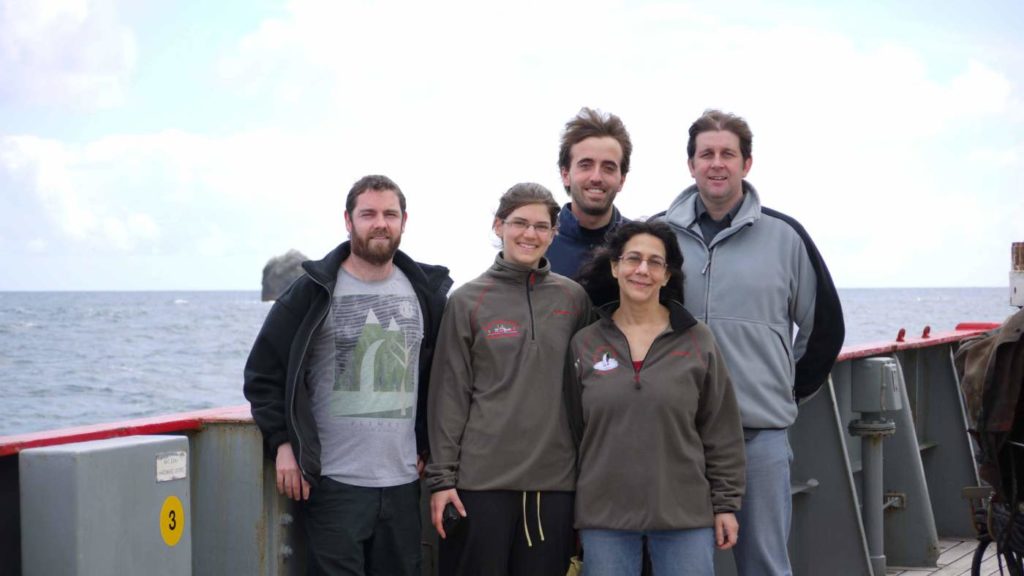
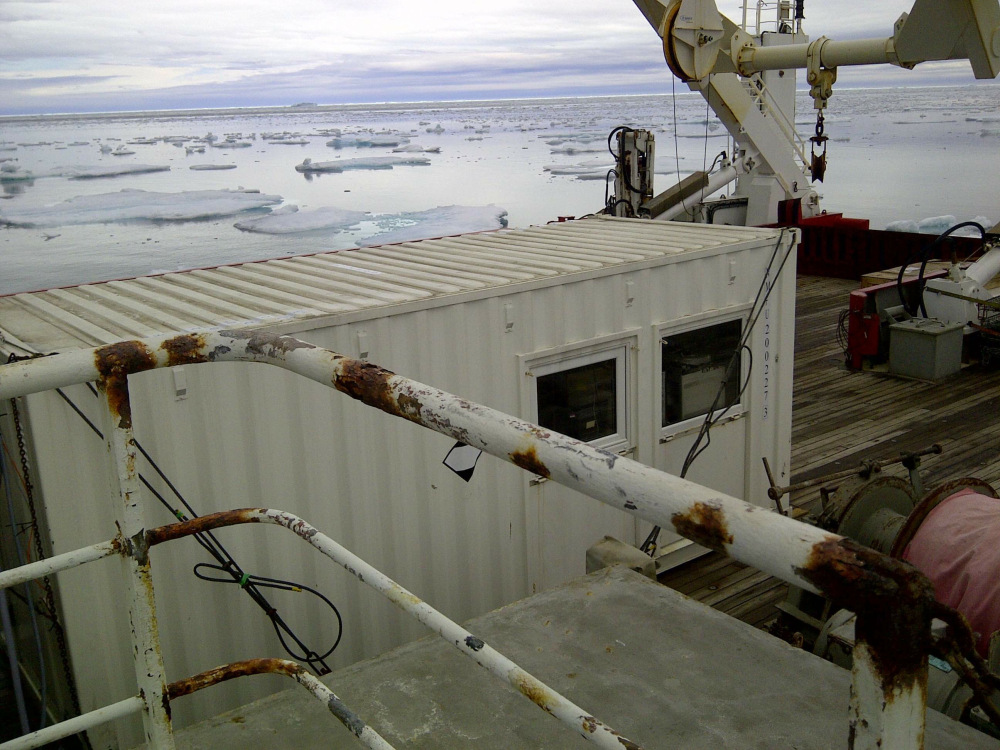
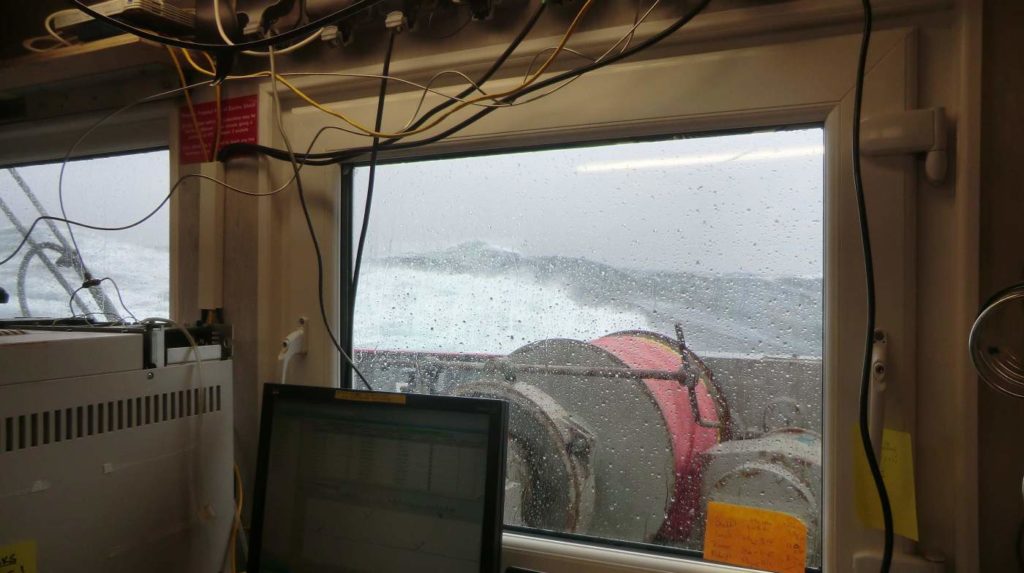
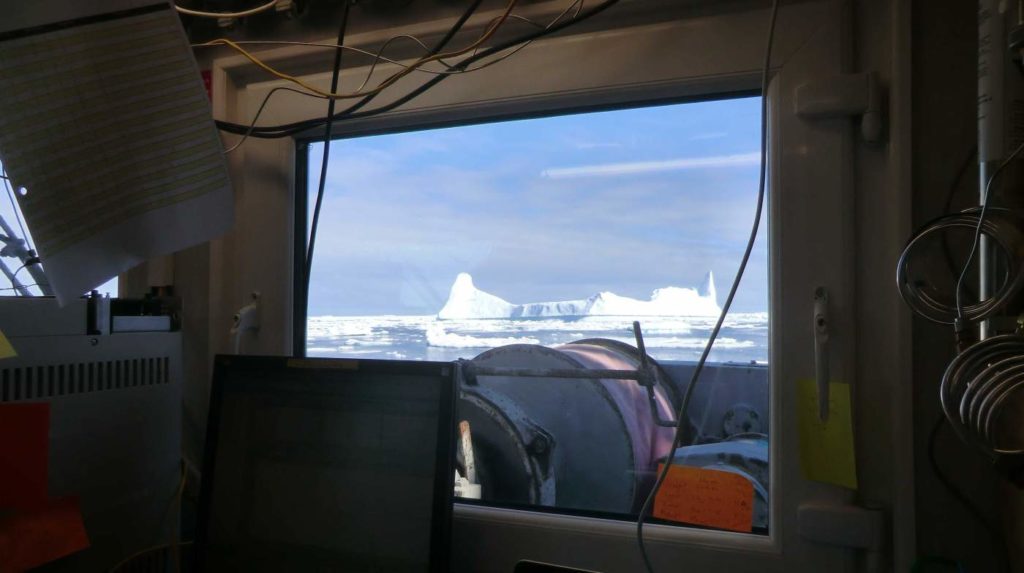
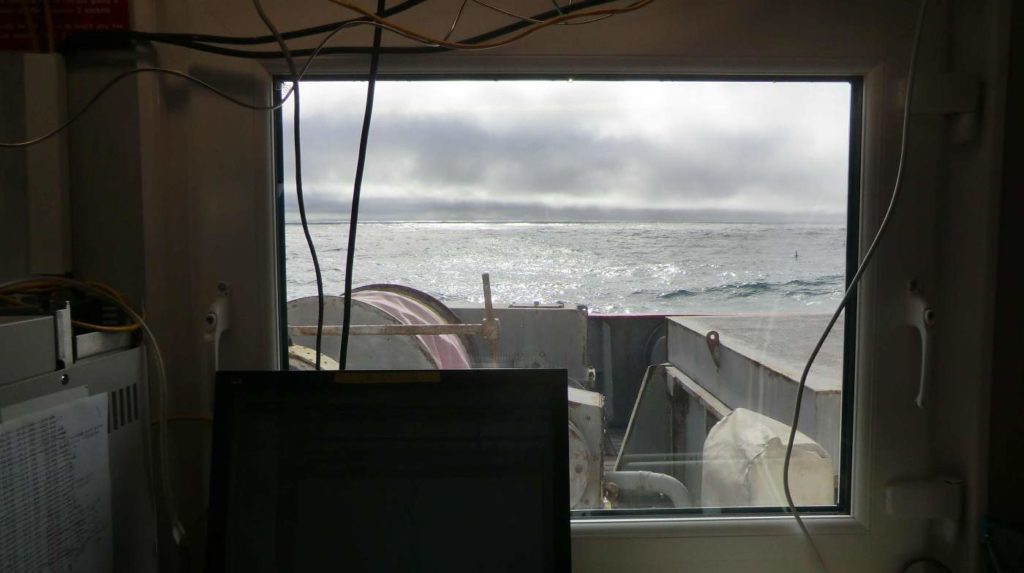
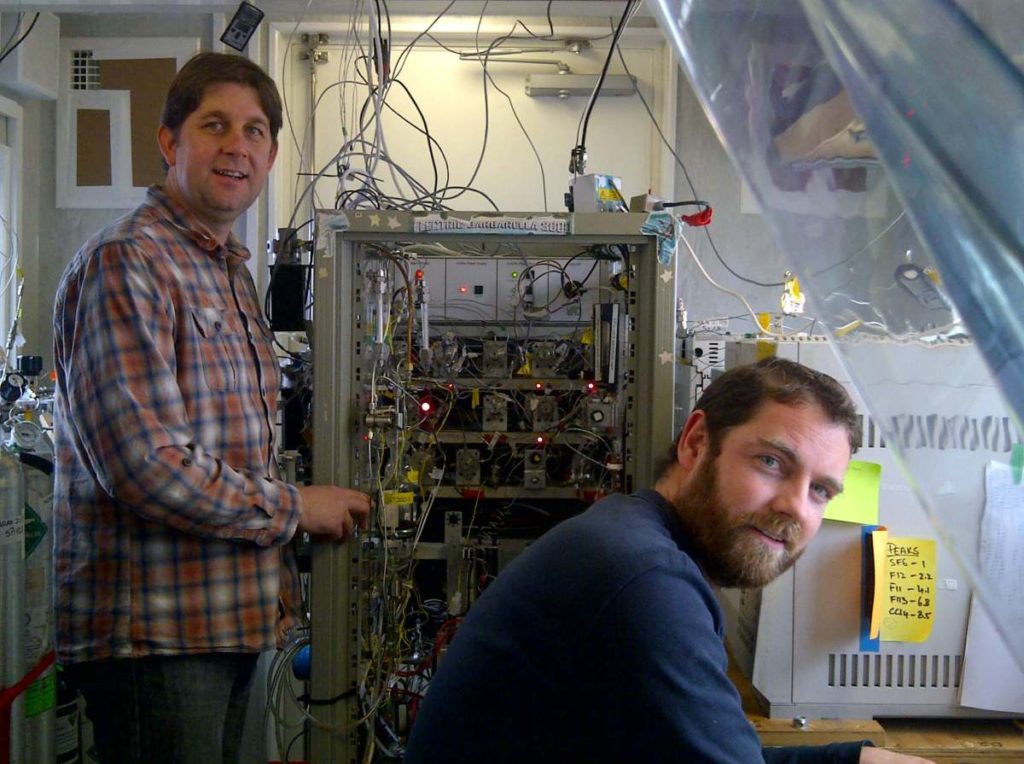
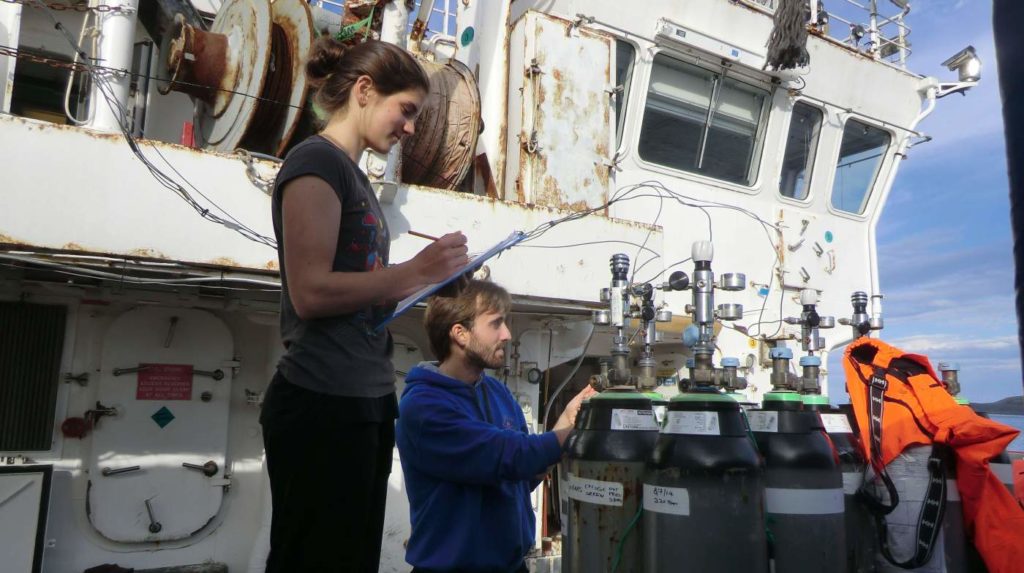
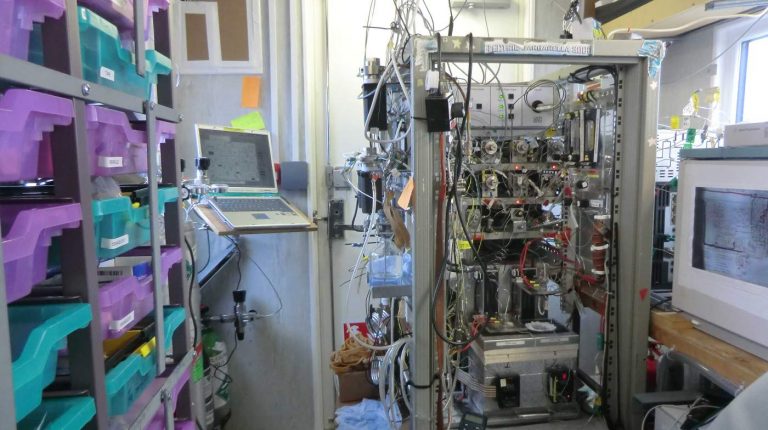
Please visit http://www.greenhouse-gases.org.uk/ragnarocc for further information about the RAGNARoCC project.